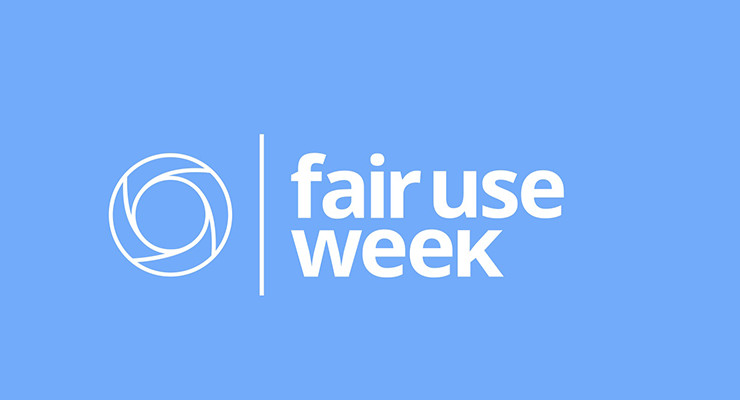Fair Use Week – Fair Use in Online Instruction
This week is Fair Use Week, a dedicated time to promote and discuss the opportunities Fair Use gives us in our daily activities. Fair Use is probably the most powerful component of U.S. Copyright law, and the most misunderstood. Section 107 of the U.S. Copyright Act describes Fair Use as a limitation on the exclusive rights of copyright holders for purposes such as “criticism, comment, news reporting, teaching (including multiple copies for classroom use), scholarship, or research.” Fair Use is often referred to as the breathing space for free speech, free inquiry, and the open exchange of ideas in copyright law – the Supreme Court has explicitly recognized this as a “First Amendment safeguard.” It’s what allows us to include quotations from published sources in our scholarship, share Youtube videos with our friends on Facebook, record episodes on our DVR for later, and read interesting fan fiction. And, it’s one of best tools to have in your pocket when designing an online course (see Fair Use in a Day in the Life of a College Student).
Fair Use is meant to be flexible, so there are no strict rules to tell you whether a use qualifies as fair. Instead, you evaluate each use to come to a reasonable conclusion. Fair use is determined through considering each use using these four factors:
- Purpose and character of the use: if your use is for teaching, this tends to favor fair use, especially if access is restricted to students enrolled in a class.
- Nature of the copyrighted work: Is the work factual, published or out of print? These weigh in favor of fair use.
- Amount and substantiality of the portion used: Are you using only what you need to meet your instructional purpose? Using a small portion of a work tends to weigh more toward fairness, but it can be fair to use an entire work if it is needed for the purpose of the use.
- Effect of the use on the potential market for the original work: A use is more likely to be fair if it doesn’t harm the potential market of a work. However, if it does, this could weigh more heavily against fair use than the other factors. For example, making copies from a workbook that is specifically marketed for students would be unlikely to be considered fair.
All four factors must be considered, and no one factor is determinative. This last is important, because it correct a common misunderstanding that Fair Use can’t be applied if a use is for commercial purposes (Factor 4). In a wide range of cases, the courts have found in favor of commercial entities and uses that are considered to be fair. Another important consideration for evaluating the factors of fair use is whether your use is considered transformative under Factor One. This means your use adds new meaning or creates new information or insights to the original work. Here are a few questions to ask yourself when deciding whether your use is transformative:
- Does the copyrighted material help me make my new point?
- Will it help my readers or viewers get my point?
- Have I used no more than is needed to make my point? (Is it “just right”?)
After reviewing the four factors, and answering the questions regarding transformative use, you should be able to make a reasonable decision about whether your use qualifies as fair. It doesn’t have to be perfect, but as long as you feel you have made a sincere evaluation and have a reasonable justification, you’re probably safe. And just like anything else, making a fair use evaluation gets easier the more often you do it, so don’t be afraid! I often find it helps to talk over my decision with another person, just to make sure I wasn’t overly influenced by what I want to do or what would be easiest for me.
Finally, there are lots of resources and tools to help you if you still feel uncertain or want to double check your work. Here are some recommendations:
- Know Your Copy Rights: What you CAN do
- Using Copyrighted Works in Your Teaching-FAQ
- ASU Copyright Library Guide
- Fair Use Evaluator (a tool to help you walk through an evaluation)
- Fair Use Codes of Best Practices



